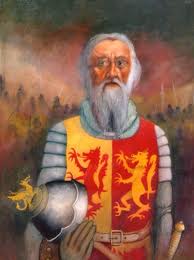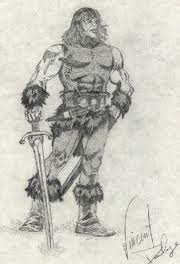
In history he is known as the son of Urien and a prince of Rheged. Eugenius is the Roman equivalent of his name. He, like his father, fought the Northern Angles towards the end of the sixth century. In a churchyard in Penrith is the so-called Giant’s Grave that was regarded for a long time as his and an elegy on his death was composed by the Welsh bard Taliesin.
He later became a hero of Welsh legend. He was pulled into Arthurian saga anachronistically, because he was unknown at the time Culwych and Olwen, which never mentions him, was written. This might be the result of brief allusion to him found in Geoffrey of Monmouth. A Welsh triad names his mother as Modron, originally a Celtic goddess. He is a character in The Dream of Rhonabwy and Owain (or The Lady of the Fountain).































